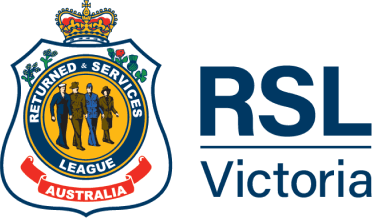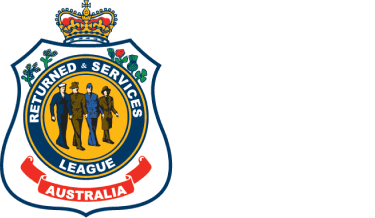Photos by James McPherson
Lola shadows Andrew Hall in the supermarket, accompanies him on aeroplanes and is even at his feet when he donates blood.
But the black labrador is more than just his constant companion; she is a highly trained animal helping him with his clinical recovery.
Lola is one of a growing number of assistance dogs in Australia, helping improve the lives of veterans with post-traumatic stress disorder (PTSD).
The animals undergo years of training to detect signs of stress or anxiety in their owners.
Once they become aware of deterioration in their owner’s mental state, they act to reassure or motivate them, potentially preventing a traumatic situation from unfolding.
“Lola’s my best mate,” Andrew said
"She’s so smart, she can just look at me and know when I need to remove myself from a situation and she wakes me up when I’m having a bad night."
Andrew Hall
To explain the science behind how assistance dogs support their owners, La Trobe University animal cognition expert, Dr Tiffani Howell, tells the true tale of a horse called Hans.
Hans trotted into the history books more than 100 years ago after his owner taught him to ‘solve’ simple mathematical equations.
“The handler would give the horse a maths problem, and then the horse would tap his hoof until he reached the right answer,” the Senior Research Fellow said.
Scientists studying Hans soon discovered that when the horse tapped his hoof, its trainer displayed signs of tension through his facial expressions, postures and breathing, which inevitably disappeared when Hans reached the correct answer.
Hans wasn’t a mathematician — the horse had learnt to read its owner’s micro movements and respond accordingly, now known as the Clever Hans effect.
“It’s amazing,” Dr Howell said.
“And we think that is what is happening with assistance; the animal is noticing something that their owner doesn’t even realise that they are doing — a change in their breathing, eyes narrowing, or a subtle shift in their voice or movements — and it is trained to respond to it.”
It’s something that Andrew, who served in the Australian Army for almost three decades, can attest to.
The Vice President of the Montmorency Eltham RSL Sub-Branch sought help for PTSD after experiencing traumatic events in the Middle East.
Two years ago, Lola came into his life. She has made an immeasurable difference to his wellbeing.
“PTSD affects people differently, but for me Lola really keeps me motivated, safe and grounded,” Andrew said.
He hopes more veterans benefit from this type of assistance, but he admits having an assistance dog is a big commitment.
“I joke that sometimes it’s like having young baby again; they make themselves slightly dependent on you and vice versa,” he said.
"Lola gets me out of bed, or off the couch by poking her nose into me, some days it’s a bit more of a headbutt. It’s her way of saying, ‘Come on, let’s go’."
Andrew Hall
“My wife also works full-time and my son lives in Western Australia, so Lola gives me something to do, other than just the mechanics of getting through the day.”
She is also trained to detect and respond to signs of stress.
“We can be out somewhere and she will start pushing me away, or jumping on me, and sometimes I think that I’m fine, but the trainers have told me to trust her, because she is picking up on things I may not even be aware that I’m doing.”
Dr Howell said that what makes dogs really great as assistance animals is their willingness to work with humans.
“They are adaptable and can be trained to behave in public,” she said.
There are important distinctions between assistance, therapy or service dogs.
Dr Howell said an assistance dog is trained to perform at least one task that mitigates the impact of a person’s disability.
It is trained to such a high standard of behaviour and hygiene, that it qualifies for public access rights, which means they can go into a café, library or use public transport.
“The classic example is a guide dog, which has been around for decades, but more recently we have seen other types of assistance animals, such as psychiatric assistance dogs for people with PTSD,” Dr Howell said.
“On the other hand, a therapy animal is part of a structured therapeutic program managed by a healthcare professional.”
There is increasing recognition of the benefit of assistance dogs for veterans experiencing PTSD.
The Department of Veterans’ Affairs has a Psychiatric Assistance Dog Program to support the clinical recovery of eligible veterans with a PTSD diagnosis.
The Federal Government has also backed a research project into assistance dogs and veterans’ mental health, led by La Trobe’s School of Psychology and Public Health.
While the outcome of the research is still awaiting publication, Dr Howell said evidence emerging overseas had shown assistance dogs could improve quality of life, independence and reduce PTSD symptoms.
“When we talk about quality of life, it includes things like the ability to get a good night’s sleep, or to go out into the community, without relying on another person,” Dr Howell said.
Even though the results of the research are very promising, Dr Howell cautions:
"These dogs are not a cure. They can improve someone’s ability to function, their quality of life and management of PTSD, but it’s still there and it’s important to continue to seek professional support to manage the symptoms."
Dr Tiffani Howell
It’s estimated that around 8% of Australian Defence Force members experienced PTSD in the past 12 months.
Symptoms can include anxiety, flashbacks, negative thoughts and feelings and night terrors, which can make something as simple as leaving the house challenging.
Centre for Service and Therapy Dogs Australia (CSTDA) General Manager, Kevin Picker said waking a veteran with PTSD from a night terror is just one of the ways that assistance animals can improve their quality of life.
He describes how some veterans can become petrified of falling asleep because they become fearful of having another night reliving their past trauma.
They become tired and on edge and the sleep deprivation impacts every aspect of their life.
An assistance dog can help alleviate their anguish.
The animal is trained to be attuned to their owner’s unconscious signals, so it notices their quickened breath and movements in the bed and nuzzles them until they wake up.
“The results are unbelievable. We’ve seen people reengage with their families, go on holidays with their mates for the first time in years and be ready to return
to work,” Kevin said.
Another example of how a dog can empower a veteran to venture out into society is if they know that the dog can detect when they may be about to experience a flashback.
A trigger could be something as subtle as the smell of diesel as a veteran walks past a service station.
“They might start getting anxious and not know where they are, so they start to disassociate and their past trauma may reappear,” he said.
“If they have a highly trained dog that understands that this is happening to them, they can respond immediately by jumping, licking and pushing them — forcing them back to reality.”
"Now this person is no longer afraid to walk outside alone because they know they have an assistance dog that will intervene before the terror takes hold."
Kevin Picker
Kevin said training assistance dogs takes years.
The animals are selected based on their breed, characteristics and lineage.
They’ve found the best results come from pairing the puppy with a foster family, who nurtures it for the first few years of life.
Afterwards, the CSTDA trainers and therapists, which include occupational therapists, counsellors and social workers, work with the dog and train it to detect, respond and de-escalate a situation.
It then needs to integrate into its owner’s environment.
It’s an intensive process, as each veteran’s needs are different.
“What our team looks at is what is preventing that person from living their life,” Kevin said.
“And we then train that person how to use a dog to address their challenge and we train a dog how to work with that person to address their challenge.”
If this article has raised any concerns for you, please contact:
– Lifeline on 13 11 14
– Australian Defence Health and Well-being Portal ‘Fighting Fit’
– Suicide Call Back Service on 1300 659 467
– Beyond Blue on 1300 22 46 36
– Headspace on 1800 650 890
– MensLine Australia on 1300 789 978
– To access support through RSL Victoria, please contact Veteran Central via 1300 MILVET
Find out more about the Department of Veterans’ Affairs Assistance Dog Program: www.dva.gov.au/health-and-treatment/care-home-or-aged-care/services-support-you-home/assistance-dogs

